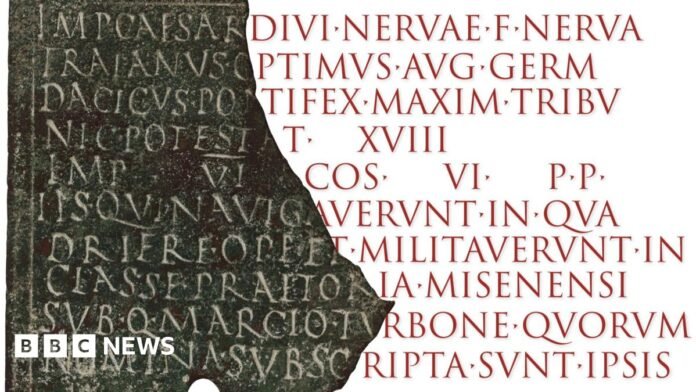It’s not the first time AI has been used to join up the missing dots in Roman history.
Earlier this year, another team of scientists digitally “unwrapped” a badly burnt scroll from the Roman town of Herculaneum using a combination of X-ray imaging and AI, revealing rows and columns of text.
Dr Sommerschield developed Aeneas along with her co-research leader Dr Yannis Assael, an AI specialist at Google DeepMind. It automates the process of contextualising based on parallels, in the blink of an eye.
Aeneas draws on a vast database of of 176,000 Roman inscriptions including images and uses a carefully designed AI system to pull up a range of relevant historical parallels, to support the work of historians, according to Dr Assael.
“What the historian can’t do is assess these parallels in a matter of seconds across tens of thousands of inscriptions, and that is where AI can come in as an assistant.”
The team tested out the system in dating a famous Roman text at the Temple of Augustus in Ankara in Turkey, known as the queen of inscriptions because of its importance to our understanding of Roman history. The Res Gestae Divi Augusti was composed by the first Roman Emperor, Augustus, giving an account of his life and accomplishments. Its date is hotly contested among historians.
Aeneas was able to narrow down the options to two possible ranges, the most likely being between 10 and 20 CE and a second slightly less likely range from 10 to 1 BCE. This showed the system’s accuracy as most historians agree on these two as the most likely possibilities.






